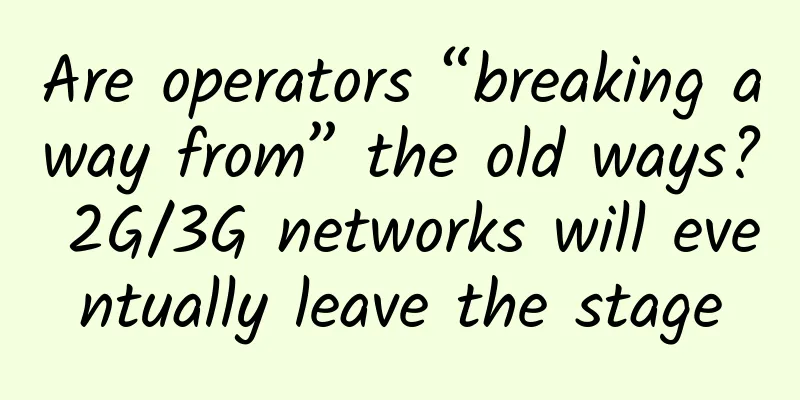Why enterprises should pay close attention to Wi-Fi 7

|
Industry experts predict that the latest Wi-Fi versions will emerge quickly. Streaming and dense device use cases are considered suitable. With wireless traffic far outstripping wired data, the emergence of Wi-Fi 7 seems certain to attract the attention of enterprises and operators looking to put the latest Wi-Fi products into use. Driven by the Wi-Fi Alliance’s recently launched Wi-Fi 7 Certified product certification program, certified products are likely to become the most visible part of the Internet access market this year. Why is Wi-Fi 7 on the rise?Wi-Fi 7 products offer enterprise users increased performance to support more users in denser environments than Wi-Fi 6. It is positioned as a match for streaming applications, and the ability to handle more users per access point (AP) means fewer devices to manage and maintain in a deployment. Wi-Fi 7 is attractive for many reasons. The first is its flexibility. IEEE standard 802.11be works on multiple radio bands, including 2.4GHz, 5GHz, and 6GHz. Its speed is another selling point, offering links up to 40,000 bits per second. Another feature of Wi-Fi 7, hybrid automatic repeat request (HARQ), allows for multiple link adaptations. Just as importantly, Wi-Fi-7 devices are compatible with its latest Wi-Fi 6E. Operators embrace Wi-Fi 7The rapid rise of Wi-Fi 7 is about more than simple technical features and advanced capabilities. Operators are eager to deploy Wi-Fi 7 products to help them stand out in an increasingly crowded broadband market and eliminate market confusion caused by the coexistence of Wi-Fi 6 and Wi-Fi 6E. While Wi-Fi 6E has specific advantages over its predecessor, Wi-Fi 6, the latter has been implemented by entertainment and sports stadium owners to best serve fans in the stands, who are increasingly equipped with powerful mobile devices equipped with team and franchise apps. Professional sports teams are using Wi-Fi 6 to collect fan data that can be used to provide a more personalized experience for each attendee. Early Wi-Fi 7 products at Mobile World CongressLast year, chip, module and device vendors including Qualcomm, Broadcom, Intel, MediaTek and CommScope launched products. Now, the Wi-Fi Alliance predicts that more than 233 million Wi-Fi 7 devices will enter the market in 2024, rising to 2.1 billion by 2028. Wi-Fi 7 certification program drives deploymentJust last month, the Wi-Fi Alliance launched its Wi-Fi 7 certification program, which is designed to approve interoperable devices that provide certain required features. It's not clear whether products released before certification meet the requirements or have been adjusted to meet them. As a resource for operators and enterprise users (and those working from home), the alliance has created a product search resource on its website where people can enter a product name and manufacturer to see if it is certified. The Bottom Line on Wi-Fi 7Streaming-friendly features, frequency flexibility, and bandwidth to address dense device environments all bode well for Wi-Fi 7. According to Mordor Intelligence, the Wi-Fi 7 market is valued at $875 million this year and is expected to reach $6.07 billion in the next five years, growing at a compound annual growth rate of 47.32% during the forecast period. For enterprises and operators, the Wi-Fi 7 space is worth paying close attention to. |
<<: Huawei releases Net5.5G full range of solutions to stimulate new growth for operators
>>: LAN vs. WLAN: Connecting the Wired and Wireless Worlds
Recommend
Cisco wins three employer awards for building cross-generational innovative talent strategies in the digital era
At the end of 2018, Cisco has won a series of emp...
Increase power, adjust location, and switch channels to speed up WiFi.
Have you adapted to your daily work and life afte...
Maxthon Host Los Angeles Unicom AS9929 Line VPS Simple Test
Yesterday I shared the news about Maxthon's L...
What exactly is a socket? Do you want to know?
I believe that everyone was like me when they fir...
Understanding OpenID Authentication through Examples
In the article "Understanding OAuth2 through...
How is HostYun? Simple test of HostYun Hong Kong EQ-CMI line VPS
There is no discount information, so continue tes...
Relax and have fun during the Dragon Boat Festival. WiFi signal must be strong. Here's how to adjust it
During the Dragon Boat Festival holiday, there ar...
You have to know these eleven functions of the router
Many friends often leave messages asking, how to ...
Wu Hequan, Academician of the Chinese Academy of Engineering: 5G+ education faces seven challenges
Education is a major national and party priority....
Huawei launches IoT cloud service, emphasizes IoT security, and promotes large-scale commercial use of IoT
[51CTO.com original article] The Internet of Thin...
Meituan second interview: TCP's four waves, can it be reduced to three?
Hello everyone, I am Xiaolin. I have posted this ...
SDN reshapes enterprise networks and changes the role of network managers
We have seen that many operators have significant...
TmhHost Hong Kong CN2 high-defense server online and simple test
TmhHost recently launched the Hong Kong CN2 high-...
In the first month of Alipay’s digital shopping mall launch, 80% of the country’s top shopping malls have opened Alipay “offices”
Intime, Mixc, Impression City and Alipay jointly ...
Why are some websites http and some https? A difference of one second makes a big difference.
When users open Taobao, Baidu, Zhihu and other ma...








![[11.11] HostingViet: Vietnam VPS annual payment 40% off, 2GB/20G SSD/unlimited traffic/annual payment starting from 193 yuan](/upload/images/67cabd1cac212.webp)
